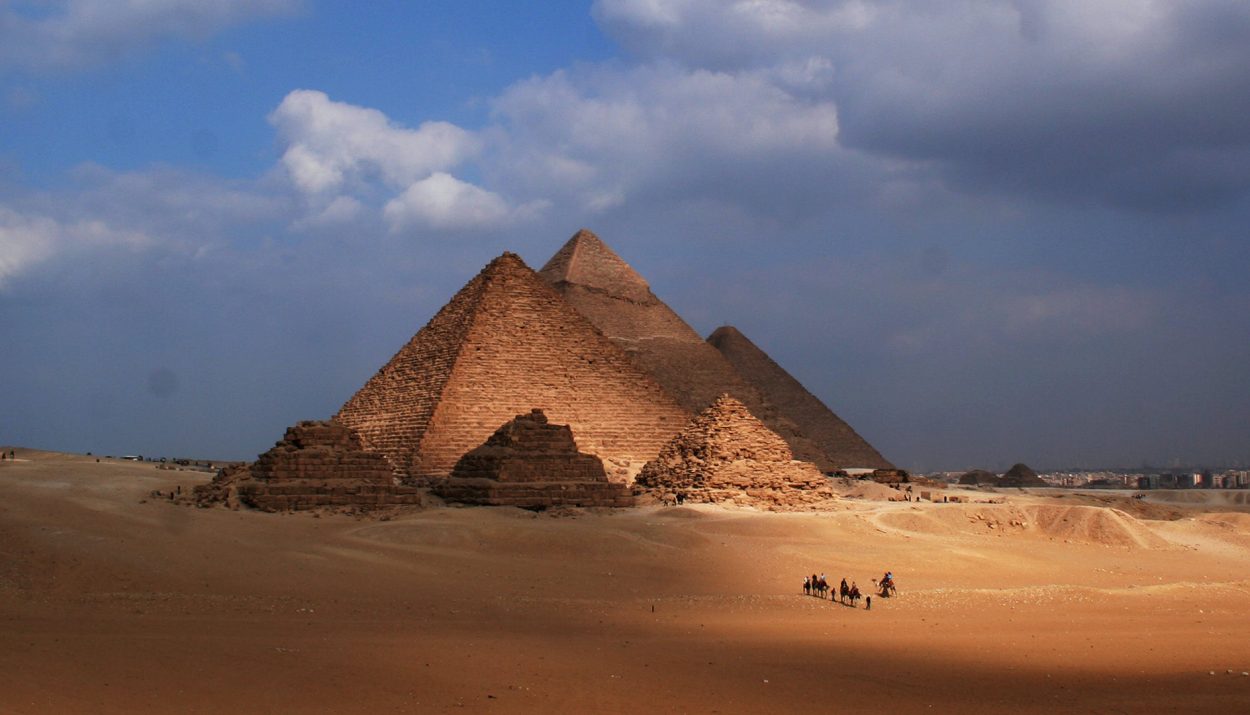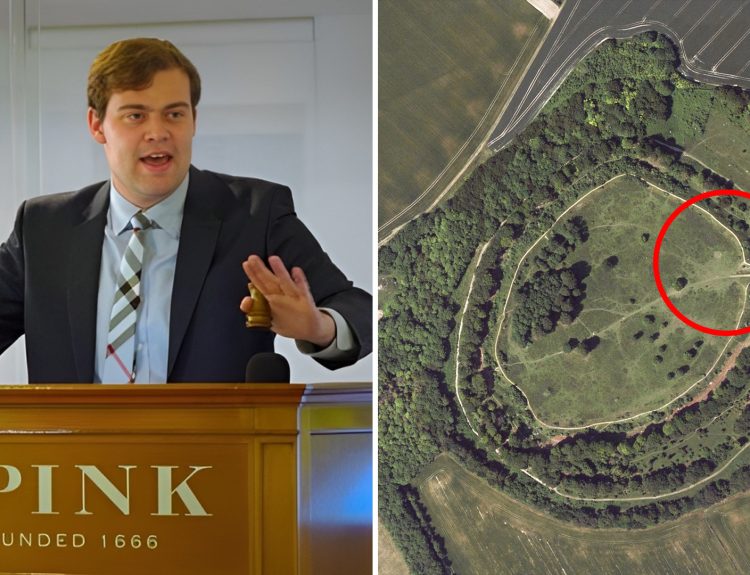Most of us grew up hearing that the Great Pyramid of Giza in Egypt, the only one of the Seven Wonders of the Ancient World that still exists today, was built using slave labor. Hollywood movies, textbooks, and even children’s cartoons perpetuated this myth.
We believed that slaves were forced to erect the Pyramids because, to be honest, it made sense. How else could one pharaoh convince thousands of men to commit to the backbreaking work required to move the estimated 2.3 million stone blocks into a 300-feet tall megalith?
A Massive Undertaking
The Great Pyramid of Giza was commissioned by the pharaoh Khufu and was finalized around the year 2560 BCE. The structure was built using stone blocks made of limestone and granite. The limestone seems to have been locally sourced, however the granite blocks may have come from quarries as far as 500 miles away.

The limestone blocks vary in size and weigh between 3 and 80 tons. The granite blocks, used for interior chambers and passage, weigh between 20 and 80 tons. Archaeologists have differing theories to explain how the stones were transported and lifted into place.
Let’s Blame Herodotus
With that many massive, cumbersome, and heavy blocks, it has long been assumed that the Egyptians relied on forced labor. The Egyptians did not leave behind written documents to tell us who built the Pyramid and how they did it. The only information we have comes from writings made long after the Pyramid was built.
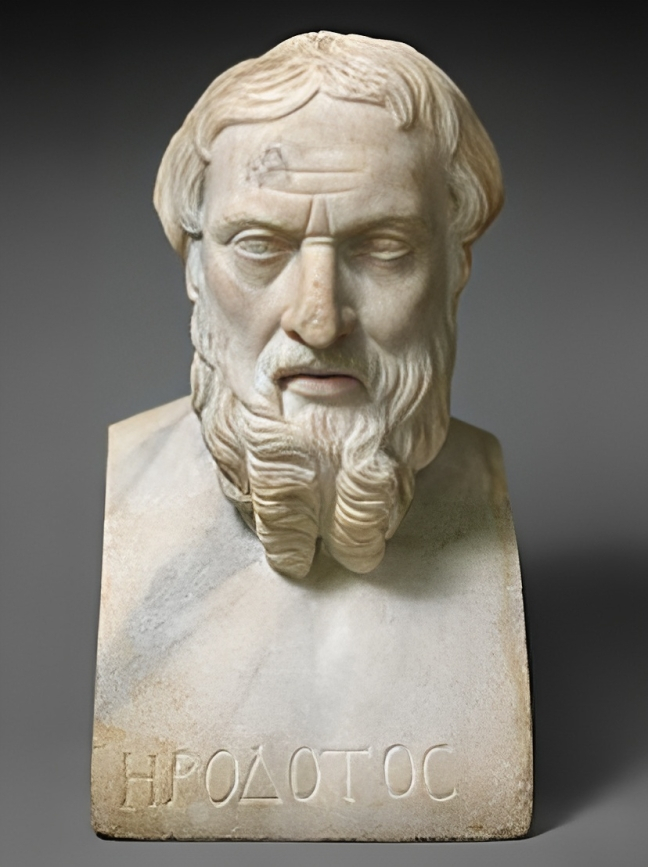
The Greek historian Herodotus was the main source of information about the Pyramid from the ancient world. But Herodotus made a mistake when interpreting the story of Exodus from the Bible. Herodotus’s error turned the Pyramid builders into slaves. And that belief stuck.
Fast Forward to 1990
A tourist and amateur Egyptologist visiting Giza in 1990 made an intriguing discovery – graves located near the Pyramid site. Further excavation and study of these graves yielded some amazing evidence that rewrites Egyptian history.
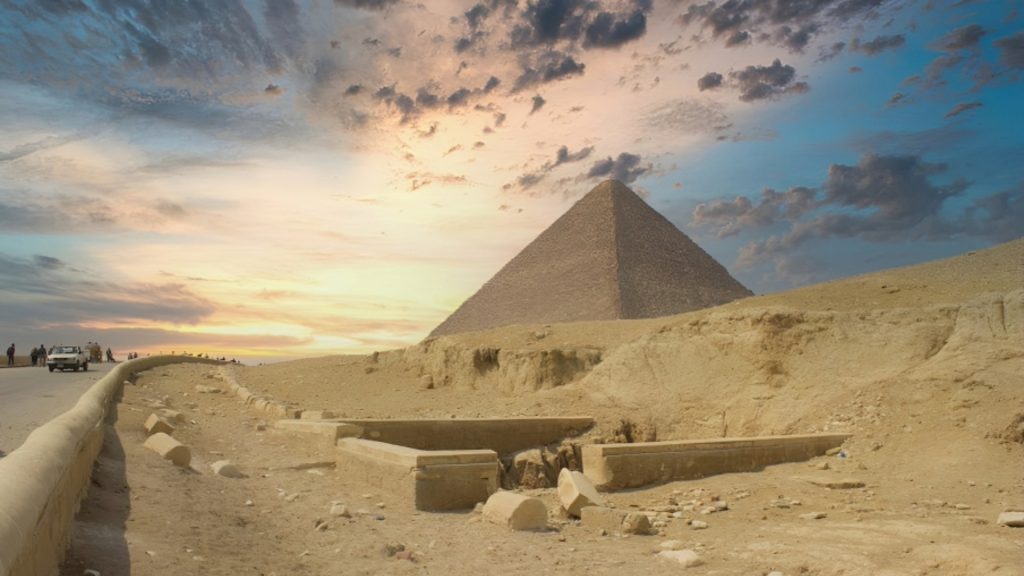
According to Zahi Hawass, the chief archaeologist of Egypt, the evidence from these grave sites offer proof that the Pyramid was built by skilled, paid laborers, not slaves. Today, most archaeologists and Egyptologists have accepted this evidence.
Show Me the Proof
As Zahi Hawass explained, the tombs, although simple, still included supplies and artifacts that were meant to help the deceased find comfort in the afterlife. The graves were also located close to the Pyramid itself.
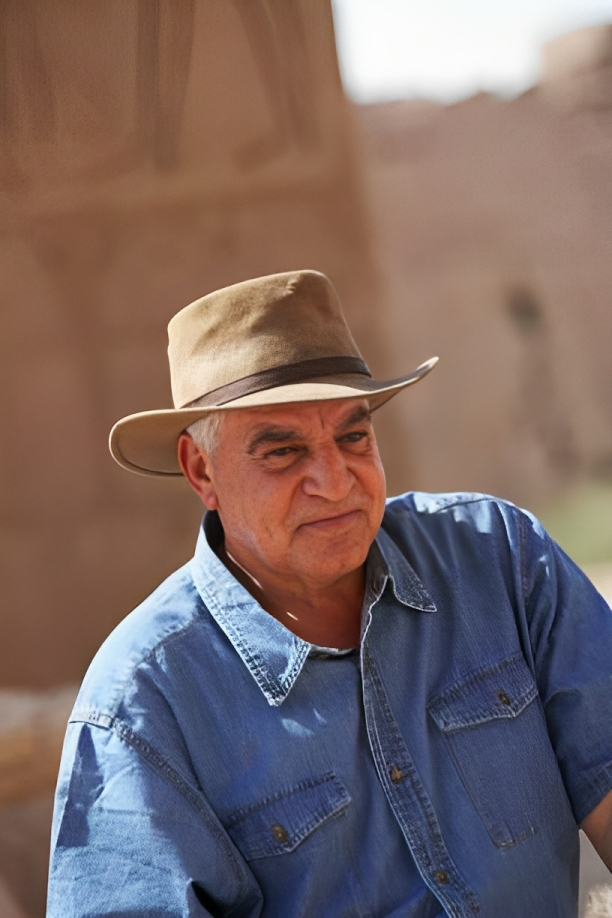
Both of these points, according to Hawass, tell us that the Pyramid builders were not slaves. They were men who were valued which is why their community took such care in preparing their burials. Slaves would not be honored in this manner.
Workers’ Communities on the Giza Plateau
Further excavations revealed the ruins of sizable communities on the Giza Plateau that Egyptologists believe served as housing for the workers who built the Pyramid. Archaeologists unearthed long buildings that were thought to be barracks.

In addition, they have discovered communal dining areas and evidence that the workers were well cared for. It was the graves of the workers, however, that yielded additional clues to indicate that the workers were likely not enslaved.
A Clue in the Bones
The worker tombs that were found provided valuable information. For starters, the deceased were not mummified and were all buried in the fetal position. Their heads all pointed westward, and their feet all pointed to the east, as was the common practice of the day.
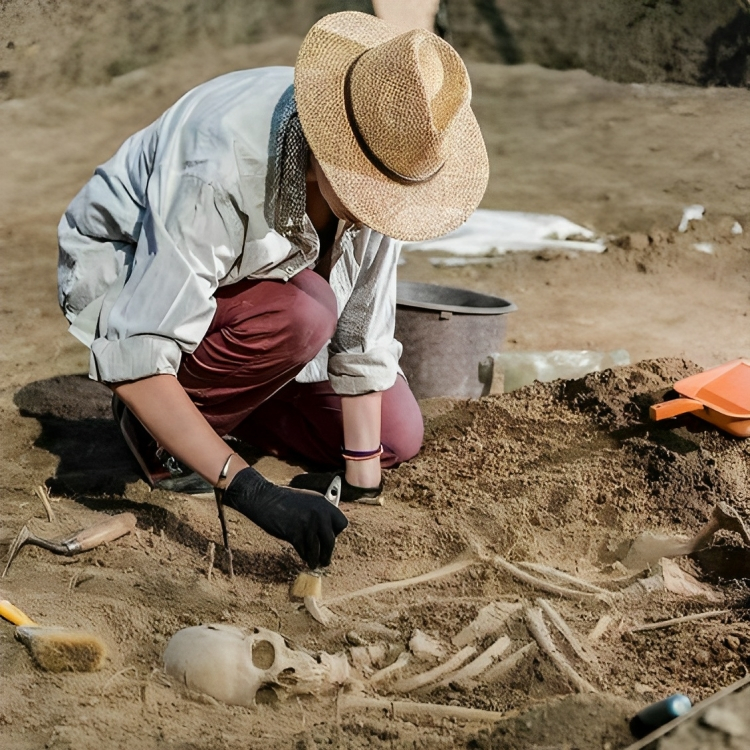
Analysis of their bones showed that they regularly consumed beef and mutton. Although they were well-fed, the bones also bore evidence of their hard labor. There were signs of arthritis, and damage to their lower vertebrae.
How Many People Built the Pyramid?
The evidence uncovered at the site of the workers’ communities refutes another one of Herodotus’s claims about the Great Pyramid of Giza. In the Greek historian’s writings, Herodotus estimated that it required a workforce of 100,000 men to build the Pyramid.
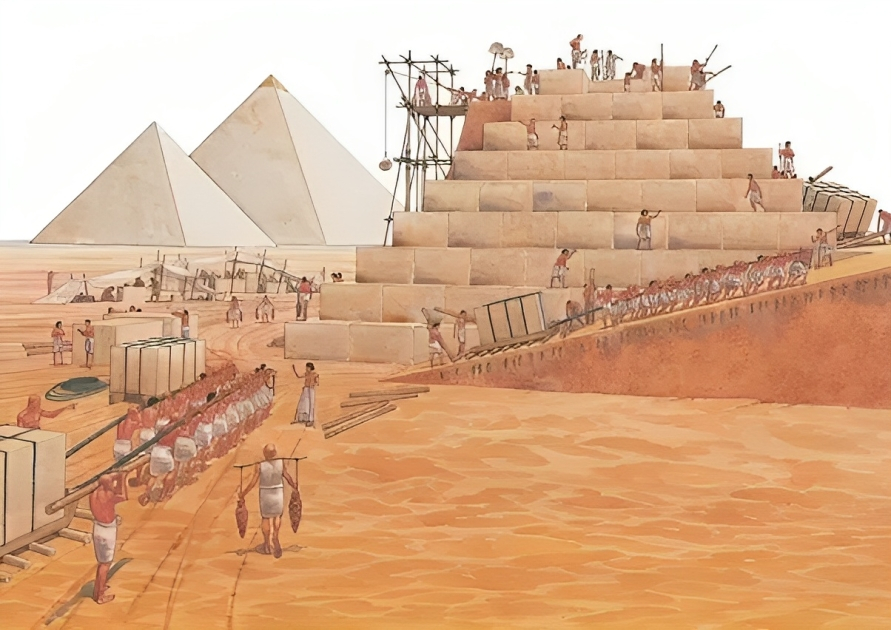
As Hawass explained, the archaeological evidence paints a different story. It tells us that the workers ate 21 cattle and 23 sheep per day. This information, and other data discovered, show that the workforce was much smaller. At about 10,000 men, it was only 10% of the number thrown out by Herodotus.
If Slaves Didn’t Build the Pyramid, Who Did?
According to Zahi Hawass, the evidence gathered at the workers’ site all show that the Pyramid builders were not slaves forced against their will to do hard labor. Instead, a different arrangement – one not unlike the feudal system of Europe – was in place.
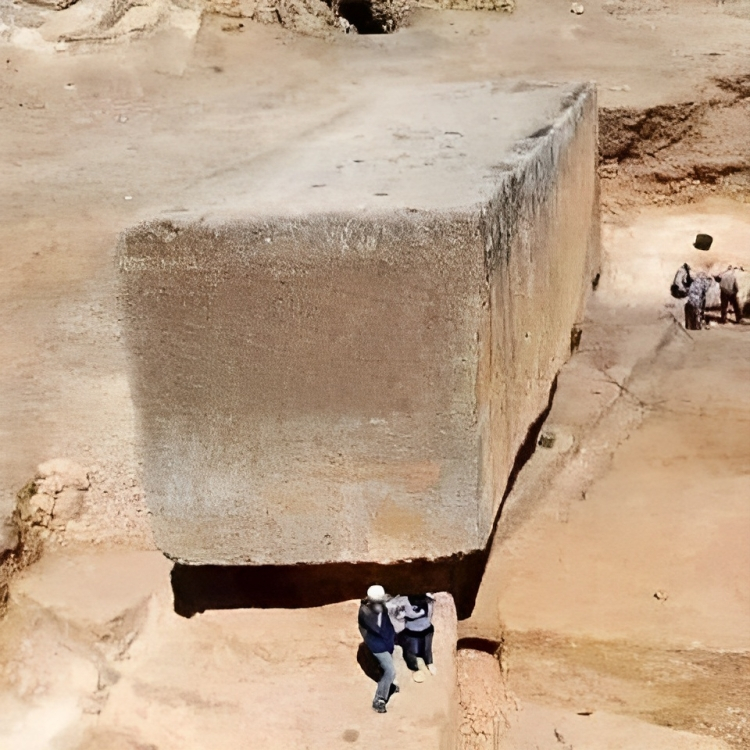
Workers donated a portion of their time and labor to the service of their pharaoh. In exchange, the workers are allowed the use of land for farming and given the protection of the pharaoh. The workers also received financial compensation. But it wasn’t a full-time gig.
Rotating Work Crews
The most likely scenario is that a core group of skilled laborers were the only ones working full time on the construction of the Pyramid. They oversaw a rotating workforce of temporary laborers.
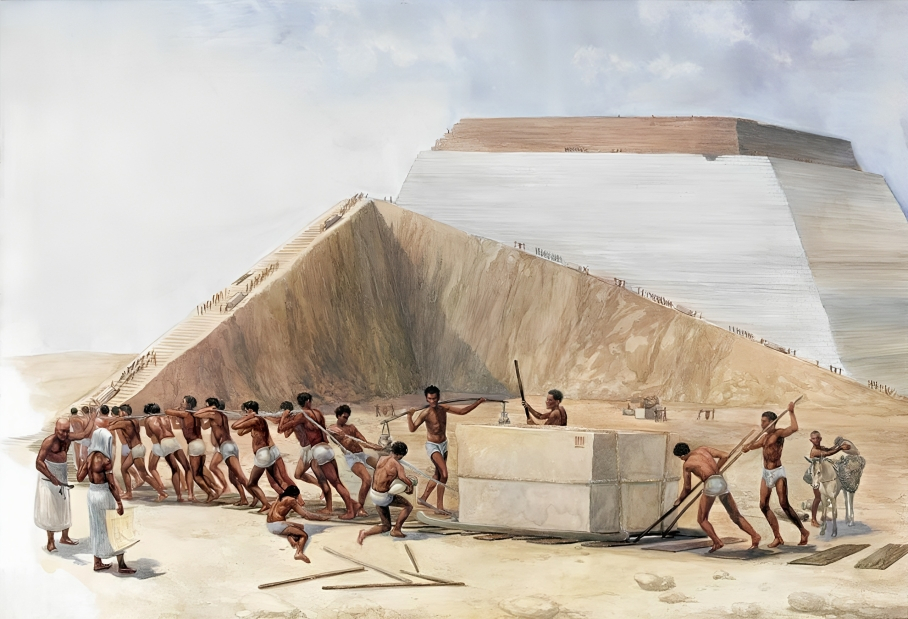
The laborers left their homes and farms for a few months at a time. They did their civil duty by working on the pharaoh’s grand construction project during the agricultural off-season, and then returned to their lives.
Abolishing the Slavery Myth
For both Egyptologists and citizens of Egypt, the proof to support the theory that the Great Pyramid of Giza was built by non-slaves comes as welcome news. The Great Pyramid is a source of cultural pride that had been, for hundreds of years, tarnished by the belief that slave labor was used.
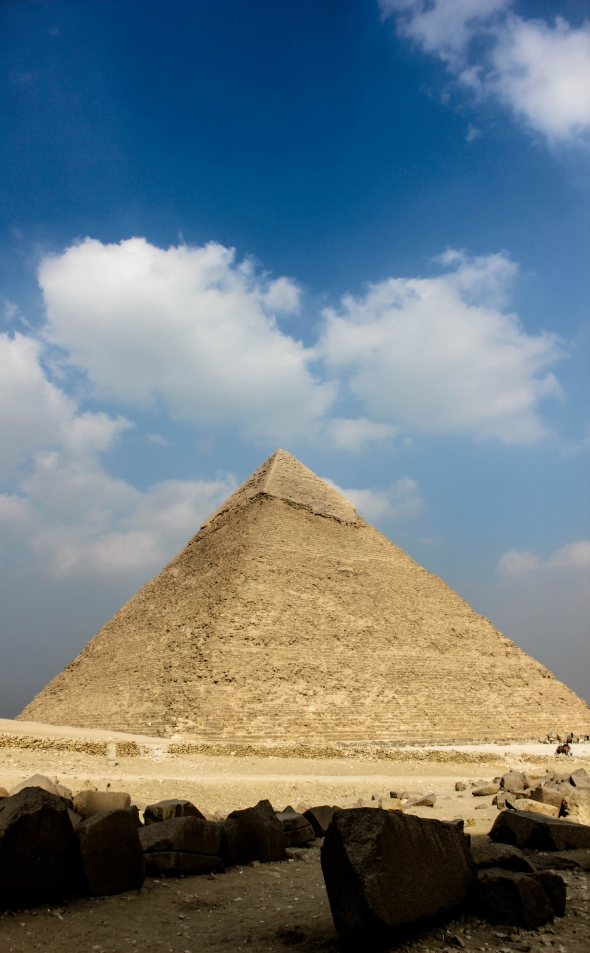
As Dieter Wildung, who once served as the director of the Egyptian Museum of Berlin, explained, the myth of slave labor was so widespread because it was easy to believe. “The world simply could not believe the pyramids were built without oppression and forced labor,” he explained. Rather, it was “out of loyalty to the pharaohs.”

